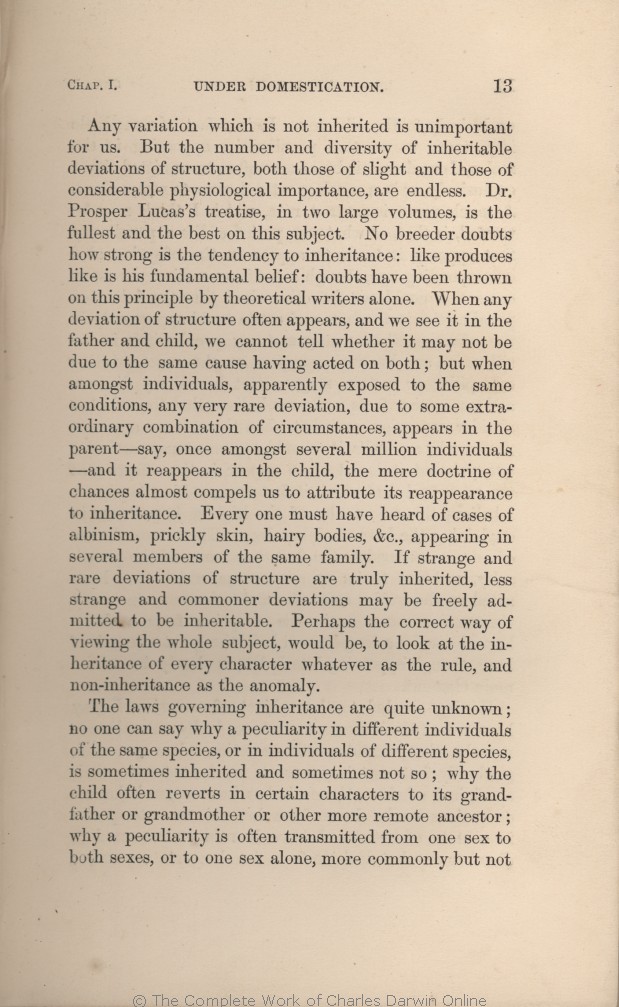Any variation which is not inherited is unimportant for us. But the number and diversity of inheritable deviations of structure, both those of slight and those of considerable physiological importance,
are | are 1861 1866 1869 1872 | | is 1859 1860 |
| inheritance: 1859 1860 1861 1866 1869 | | inheritance; 1872 |
| like 1859 1860 1861 1866 | | that like 1869 1872 |
| by 1859 1860 1861 1866 | | only by 1869 1872 |
| writers 1859 1860 1861 1866 | | writers. 1869 1872 |
| alone. 1859 1860 1861 1866 | alone. 1869 1872 |
| any 1860 1861 1866 1869 1872 | | a 1859 |
| of structure often appears, 1860 1861 1866 1869 1872 |
| appears not unfrequently, 1859 |
| ..... 1860 1861 1866 1869 1872 | | original 1859 |
| having acted 1860 1861 1866 1869 1872 | | acting 1859 |
| amongst 1859 1860 1861 1866 1869 | | among 1872 |
| truly 1859 1860 1861 | | really 1866 1869 1872 |
| subject, 1859 1860 1861 1866 1869 | | subject 1872 |
|
|
The laws governing inheritance are
quite unknown; no | quite unknown; no 1859 1860 1861 1866 |
| for the most part unknown. No 1869 1872 |
| a 1860 1861 1866 | | the same 1859 1869 1872 |
| or 1860 1861 1866 1869 1872 | | and 1859 |
| individuals of 1859 1860 1861 1866 | individuals of 1869 1872 |
| characters 1859 1860 1861 1866 1869 | | characteristics 1872 |
| grandfather 1859 1860 1861 1869 1872 | | grand- father 1866 |
| other 1860 1861 1866 | | other much 1859 | other 1869 1872 |
|









